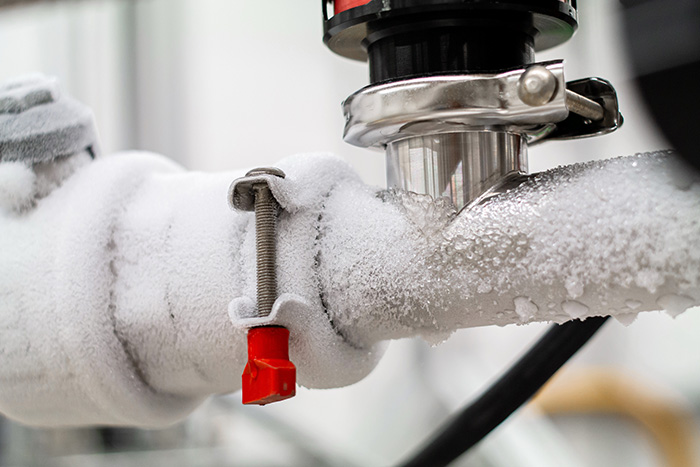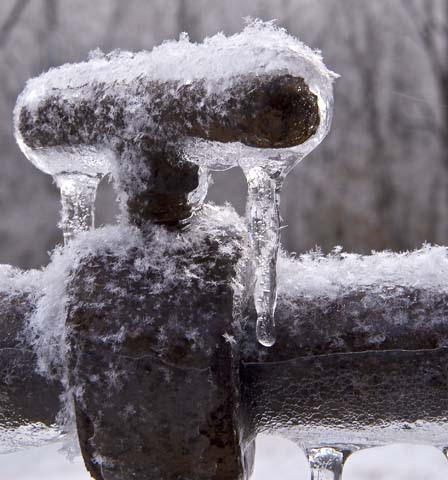Tips to Defend Pipes from Cold Weather: Specialist Tips
Tips to Defend Pipes from Cold Weather: Specialist Tips
Blog Article
What're your ideas about Winter Plumbing Precautions: Preventing Frozen Pipes?

Cold weather can wreak havoc on your pipes, specifically by freezing pipes. Below's exactly how to avoid it from happening and what to do if it does.
Intro
As temperatures decrease, the threat of frozen pipes increases, possibly leading to expensive repair services and water damage. Recognizing just how to prevent frozen pipes is vital for home owners in cold climates.
Recognizing Frozen Pipes
What triggers pipes to ice up?
Pipelines freeze when revealed to temperature levels listed below 32 ° F (0 ° C) for prolonged durations. As water inside the pipelines freezes, it broadens, putting pressure on the pipe walls and possibly triggering them to break.
Dangers and problems
Frozen pipelines can result in water system interruptions, residential or commercial property damage, and expensive repair services. Burst pipelines can flood homes and create extensive architectural damages.
Indicators of Frozen Piping
Determining icy pipes early can stop them from breaking.
Exactly how to identify frozen pipelines
Try to find lowered water flow from faucets, unusual smells or sounds from pipes, and visible frost on revealed pipes.
Prevention Tips
Insulating at risk pipelines
Cover pipes in insulation sleeves or use warmth tape to secure them from freezing temperature levels. Focus on pipelines in unheated or exterior locations of the home.
Heating techniques
Maintain interior areas properly heated up, specifically locations with pipes. Open cupboard doors to allow warm air to circulate around pipes under sinks.
Protecting Outside Pipes
Yard tubes and outside faucets
Disconnect and drain pipes yard pipes before winter season. Set up frost-proof faucets or cover outdoor taps with protected caps.
What to Do If Your Pipelines Freeze
Immediate actions to take
If you believe frozen pipelines, maintain faucets open to ease stress as the ice melts. Make use of a hairdryer or towels soaked in warm water to thaw pipelines gradually.
Long-Term Solutions
Structural adjustments
Consider rerouting pipelines away from outside wall surfaces or unheated locations. Add additional insulation to attics, cellars, and crawl spaces.
Upgrading insulation
Invest in high-grade insulation for pipelines, attic rooms, and wall surfaces. Correct insulation aids maintain constant temperature levels and reduces the danger of icy pipes.
Conclusion
Avoiding icy pipes needs aggressive procedures and fast reactions. By understanding the reasons, signs, and safety nets, property owners can shield their pipes throughout cold weather.
5 Ways to Prevent Frozen Pipes
Drain Outdoor Faucets and Disconnect Hoses
First, close the shut-off valve that controls the flow of water in the pipe to your outdoor faucet. Then, head outside to disconnect and drain your hose and open the outdoor faucet to allow the water to completely drain out of the line. Turn off the faucet when done. Finally, head back to the shut-off valve and drain the remaining water inside the pipe into a bucket or container. Additionally, if you have a home irrigation system, you should consider hiring an expert to clear the system of water each year.
Insulate Pipes
One of the best and most cost-effective methods for preventing frozen water pipes is to wrap your pipes with insulation. This is especially important for areas in your home that aren’t exposed to heat, such as an attic. We suggest using foam sleeves, which can typically be found at your local hardware store.
Keep Heat Running at 65
Your pipes are located inside your walls, and the temperature there is much colder than the rest of the house. To prevent your pipes from freezing, The Insurance Information Institute suggests that you keep your home heated to at least 65 degrees, even when traveling. You may want to invest in smart devices that can keep an eye on the temperature in your home while you’re away.
Leave Water Dripping
Moving water — even a small trickle — can prevent ice from forming inside your pipes. When freezing temps are imminent, start a drip of water from all faucets that serve exposed pipes. Leaving a few faucets running will also help relieve pressure inside the pipes and help prevent a rupture if the water inside freezes.
Open Cupboard Doors
Warm your kitchen and bathroom pipes by opening cupboards and vanities. You should also leave your interior doors ajar to help warm air circulate evenly throughout your home.

I recently found that entry on Helpful Tips to Prevent Frozen Pipes this Winter while exploring the web. Appreciated our posting? Please quickly share it. Let another person find it. I am grateful for being here. Return soon.
Schedule Today! Report this page